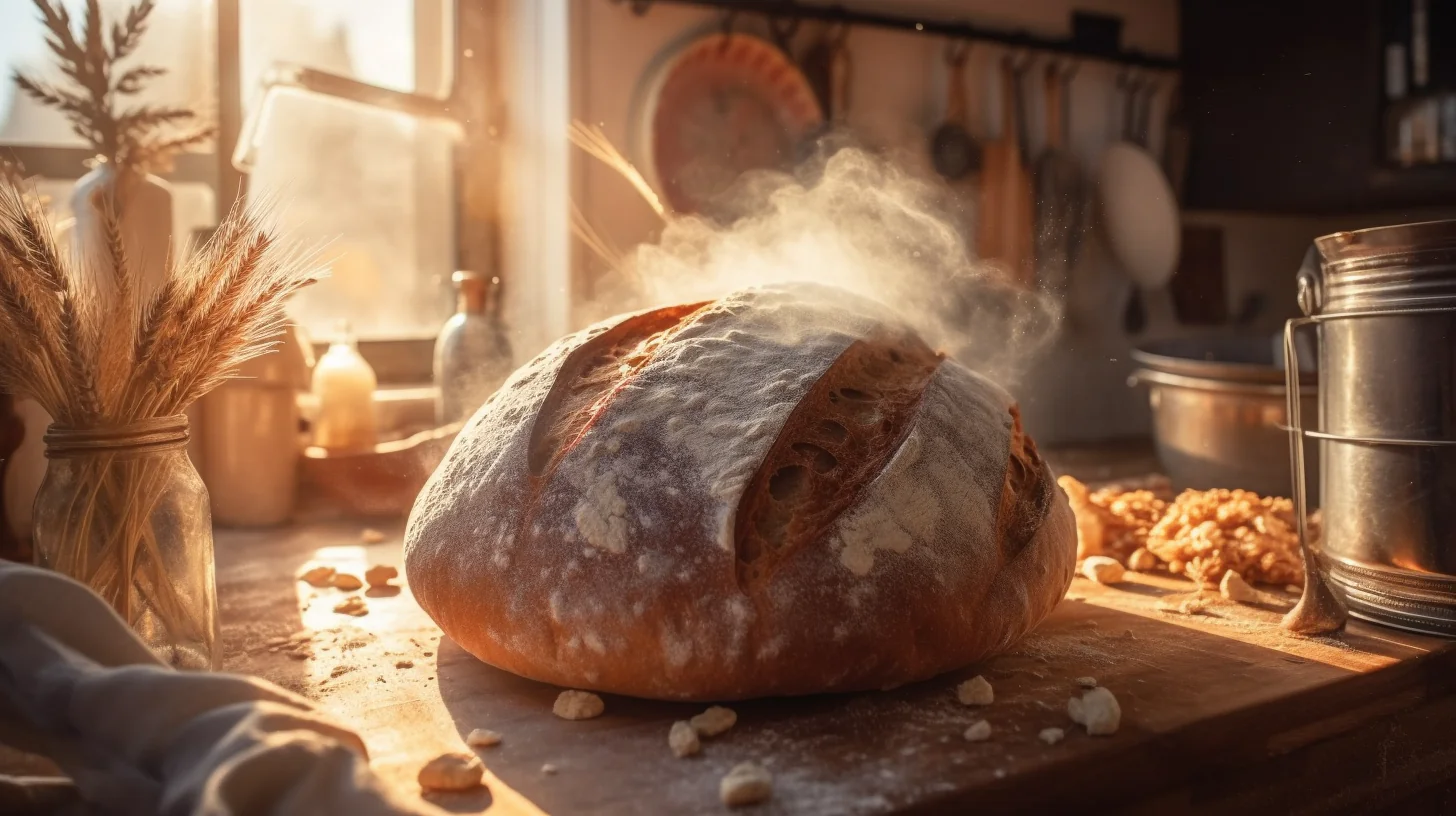Yeast is an unicellular organism that belongs to the fungi kingdom. This organism has been widely used in research for many years due to its simple structure and rapid growth. One important aspect that influences yeast growth is temperature. Temperature sensitivity is a feature that has been extensively exploited to understand yeast genetics and cellular processes better.
Temperature-sensitive (TS) mutations are powerful tools used to study gene function. TS mutations are functional at low (permissive) temperatures yet nonfunctional at high (nonpermissive) temperatures, and thus a temperature rise quickly ablates protein function. This feature allows researchers to conditionally control protein activities in various organisms, including bacteria, yeast, flies, and zebrafish, demonstrating the generality of this approach.
The importance of temperature in yeast growth is not limited to the use of TS mutations. Temperature also affects yeast metabolic pathways, protein synthesis, and general cellular physiology. Understanding the effects of temperature on yeast growth is essential for optimizing yeast-based industrial processes, such as bread, beer, and wine. Additionally, temperature sensitivity has proved to be a valuable trait in the search for new yeast strains with improved characteristics.
As we can see, yeast and temperature sensitivity are powerful for studying gene function and understanding yeast physiology. By exploiting temperature sensitivity, researchers can conditionally control protein activities in a variety of organisms. Furthermore, understanding the effects of temperature on yeast growth is essential for optimizing industrial processes and identifying new yeast strains with improved characteristics.
Table of Contents
Definition and Types of Yeast
Yeast is a living organism that plays a crucial role in baking and brewing. It is a single-celled fungus that is only visible under a microscope. Yeast works by serving as one of the leavening agents used in baking, a process known as leavening because it causes bread to rise. In brewing, yeast is responsible for converting sugars to alcohol and carbon dioxide during fermentation. Yeast also needs food and water to thrive, and it comes in various types.
There are many types of yeast, each with unique characteristics that make them suited for specific uses. Some of the most common types include:
- Brewer’s yeast: primarily used in brewing beer.
- Baker’s yeast: used in baking to help dough rise.
- Fresh yeast: sold in compressed, cake, or bulk form.
- Instant yeast: requires no additional steps beyond mixing with warm water, perfect for baking recipes that don’t call for rising overnight.
- Active yeast/Active dry yeast: gets dissolved in warm water before being added to recipes.
- Liquid yeast: essentially a slurry of live yeast, flour (or other carbs), and water, similar to a sourdough starter or bread starter.
- Powder yeast: involves growing a strain of yeast in molasses derived from sugar cane or beets, treating the molasses with heat to inhibit the development of the yeast, and then drying the yeast’s spores.
- Flake yeast: made the same way the powder yeast is made, but the yeast is not milled down to a fine powder yet is left in larger flake pieces.
- Osmotolerant yeast: yeast that tolerates higher levels of sugar.
- Top-fermenting yeast: often used in the brewing of beer, rises to the top of the fermenter during the brewing process, known for producing beers with a fruity or spicy flavor.
- Bottom-fermenting yeast: often used in the brewing of beer, settles at the bottom of the container during the fermenting process, known for producing beers with a clean, crisp flavor.
Uses of yeast are undeniable. Yeast is most commonly used in baking and brewing industries, but it is also used in other industries like chemical processing and biofuels production. In baking, the yeast helps the dough rise and gives bread its soft, fluffy texture. In brewing, yeast is responsible for the creation of alcohol and carbon dioxide. Yeast is also used as a nutritional supplement because it is high in protein, vitamin B, and minerals. It is also used as an additive in animal feed and fertilizer manufacturing because it is rich in amino acids and other nutrients.
The importance of yeast in the food industry is immense because it is used to create many staple foods and beverages. Without yeast, there would be no bread, beer, wine, or other fermented foods and beverages. Additionally, yeast plays a crucial role in the production of certain biofuels, such as ethanol. Yeast is an essential component of many industries, making it an important topic to explore and understand.
The Relationship Between Temperature and Yeast Activity: Ideal Temperature Range for Growth
Yeast is a single-cell microorganism widely used in the food and beverage industries due to its ability to convert sugar into alcohol and other products. However, yeast growth and metabolism are greatly influenced by environmental factors such as temperature. In a recent study, the effects of temperature and aeration on Williopsis saturnus var. saturnus, a yeast strain commonly found in sugar beet molasses, were investigated.
- The study found that higher temperatures resulted in higher production rates of isoamyl acetate, a compound responsible for the fruity aroma and flavor in many foods and beverages.
- Specifically, semiaerobic conditions at 25°C resulted in a production rate of 0.703 mg L−1 h−1 and a specific productivity of 0.0297 mg L−1 cell−1 h−1 isoamyl acetate, with a maximum amount of 118 mg/L.
- In contrast, lower temperatures, such as 15°C, resulted in lower production rates of isoamyl acetate.
This study highlights the importance of temperature control in yeast growth and fermentation processes. Understanding the ideal temperature range for specific yeast strains can lead to improved production rates and product quality in industries such as brewing, wine making, and baking.
Optimal Temperature Range for Different Types of Yeast
Yeast is an essential component in many baked goods and alcoholic beverages. The optimal temperature range for yeast growth depends on the type of yeast being used. It is important to know the ideal temperature range for each type to achieve the best result.
- Dry yeast: Hot water in the range of 105° and 115°F is ideal for proofing dry yeast. The yeast can activate and create carbon dioxide at this temperature to produce a lighter and fluffier baked good.
- Live yeast: On the other hand, live yeast requires a lower temperature to activate. The recommended temperature is around 95°F. Higher temperatures can damage the yeast and cause it to die.
- Fresh yeast: Like live yeast, fresh yeast can be proofed at a temperature between 95° and 100°F.
However, yeast growth is not just affected by temperature. Other factors, such as pH level, oxygen, and nutrient availability, can affect the growth and fermentation process.
The optimum temperature range for the fermentation process is 81° to 100°F. The fermentation temperature that yields the best result is 95°F. Maintaining the temperature within this range is important to ensure that the yeast can properly convert sugars into carbon dioxide and alcohol. Water at 140°F or higher is the kill zone for yeast. At this temperature, the yeast will not survive and will be unable to produce any carbon dioxide or alcohol.
Temperature at Which Yeast Dies
Yeast will die off at temperatures over 100 degrees Fahrenheit. This is because high temperatures affect the proteins and enzymes that are essential for yeast growth and reproduction. As a result, yeast loses its ability to ferment sugars, and eventually dies off entirely.
In bread, yeast is known to die off entirely once it reaches 120 degrees Fahrenheit. This is the temperature at which bread is usually baked. While yeast is necessary for bread to rise, it is not required for the bread to cook. Therefore, bread baked at high temperatures will not contain any live yeast, which is why it cannot be used to make a new batch of bread starter.
In beer, yeast will start to die off at around 90 degrees Fahrenheit, and at temperatures above 100 degrees Fahrenheit, most yeast will be dead. Different types of beer yeasts have different temperature tolerances, and some can withstand higher temperatures than others. However, once the temperature gets too high, all beer yeasts will eventually die off, and the fermentation process will stop.
In wine, yeast will also die off at temperatures over 100 degrees Fahrenheit. This is why winemakers carefully control the temperature during fermentation to ensure the yeast stays alive and active. If the temperature gets too high, the yeast will die off, and the wine will not ferment properly. Different types of wine yeasts have different temperature tolerances, and some can withstand higher temperatures than others. However, all wine yeasts will eventually die off once the temperature gets too high.
Reminder:
- Yeast dies off at temperatures over 100 degrees Fahrenheit.
- In bread, yeast dies off at 120 degrees Fahrenheit.
- In beer, most yeast will be dead above 100 degrees Fahrenheit.
- In wine, yeast dies off at temperatures over 100 degrees Fahrenheit.
Effects of High Temperatures on Yeast
If you’re interested in the effects of high temperatures on yeast, you should know that temperature is one of the most important physical parameters that has a direct influence on yeast growth and fermentation performance. How does temperature affect yeast exactly? Let’s explore this further.
Impact on Fermentation or Baking: Yeast is used in various commercial applications, including fermentation (e.g., in the production of beer and wine) and baking (e.g., in the production of bread and cakes). When yeast is exposed to high temperatures, its growth rate and metabolism increase initially, resulting in faster fermentation or proofing times for use in baking. However, yeast cells can become damaged or even die if temperatures continue to rise. This can lead to a slower fermentation process or a failed batch of bread. Therefore, it’s essential to understand how to prevent overheating.
How to Prevent Overheating: To avoid damaging the yeast, it’s essential to keep an eye on the temperature during fermentation or proofing. The optimal temperature for most Saccharomyces yeasts is between 25 to 35oC. Yeast growth rate and metabolism increase when the temperature is raised from sub-optimal to optimal temperatures and decrease when the temperature is increased. If the temperature goes too high, yeast cells can lose their viability, affecting fermentation performance. To prevent overheating, it’s best to use temperature-controlled environments and start with cooler temperatures that can gradually increase to optimal levels.
High temperatures can have a significant impact on yeast growth and fermentation performance. While higher temperatures can speed up the fermentation process, it’s vital to monitor temperatures to avoid overheating, which can damage or kill the yeast. By using temperature-controlled environments and gradually increasing temperatures, you can maintain optimal conditions for yeast growth and ensure successful fermentation and baking processes.
Effects of Low Temperatures on Yeast
Low-temperature fermentation (10–15°C) is becoming more prevalent to produce white and “rosé” wines with more pronounced aromatic profiles. The benefits of a low-temperature environment during the fermentation process are evident in the improved quality of the final product. However, this method also prolongs the time needed to complete fermentation, which can increase the economic cost and energy requirements. Additionally, cold temperatures can have a negative impact on yeast cells, affecting their ability to perform critical biological functions.
Cold can induce protein denaturation and enzymatic activity generally decreases. Furthermore, releasing reactive oxygen species (ROS) and generating oxidative stress can negatively impact yeast cell survival. ROS can damage proteins, lipids, carbohydrates, and DNA, ultimately leading to cell death. Nonetheless, yeast cells have developed various mechanisms to defend themselves against oxidative stress, including the induction of enzymes such as catalases, peroxidases, and superoxide dismutases and the synthesis of antioxidants like glutathione, vitamins C and E, and ubiquinol.
Low temperatures can also induce dormancy in yeast cells. During dormancy, the metabolic activity of the cells slows down significantly, and the cells become less responsive to environmental cues. To revive dormant yeast, bringing them back into a warm and nutrient-rich environment is important. This process can be facilitated by using a starter culture or inoculum. By providing the yeast with optimal growth conditions, it is possible to reactivate their metabolism and achieve a healthy, viable culture for fermentation.
- Factors that can lead to the dormancy of yeast cells:
- Low temperatures
- Lack of nutrients
- Unsuitable pH levels
- Excessive alcohol concentration
- High sugar concentration
Low temperatures can have both positive and negative effects on yeast cells during the fermentation process. While low-temperature fermentation can improve the quality of the final product, it also prolongs the fermentation time and can lead to the dormancy of yeast cells. When yeast cells become dormant, it is essential to revive them properly before use. Understanding the factors contributing to yeast dormancy and how to reactivate them properly can ensure a healthy and successful fermentation process.
How to Maintain Ideal Temperature for Yeast Growth
To properly maintain the ideal temperature for yeast growth, it is important to consider the temperature during both blooming and proofing stages. During blooming, yeast needs food, water, and warmth to activate. For dry active yeast, the ideal temperature for blooming is between 100-115 degrees F (38-46C) in water, while fresh yeast and instant dry yeast don’t need to be bloomed.
Regarding proofing, the best temperature for yeast is between 77-100F (25-38C). Cooler temperatures can slow down yeast fermentation, while warmer temperatures can cause the dough to become too gassy and sticky. Ideally, the dough proofing temperature should be between 77-100F (25-38C), although commercial bread producers may proof at higher temperatures such as 100F (38C). It’s important to note that yeast will continue to operate at warmer temperatures until it reaches 140F (60C) and dies.
To summarize, recommended practices for controlling temperature during yeast fermentation or baking are:
- Bloom dry active yeast at 100-115F (38-46C) water
- Proof yeast at 77-100F (25-38C)
- Use cooler temperatures to slow down yeast fermentation;
- Avoid warmer temperatures that can lead to sticky and gassy dough;
- Commercial bread producers may prove this at higher temperatures such as 100F (38C).




